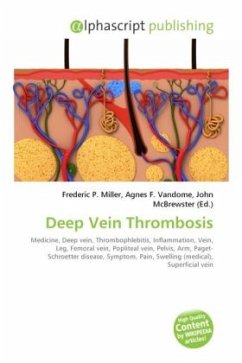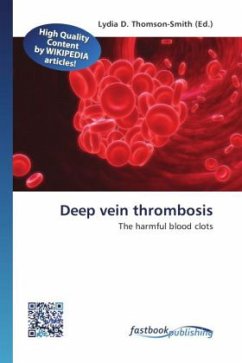High Quality Content by WIKIPEDIA articles! In medicine, deep vein thrombosis (also known as deep-vein thrombosis or deep venous thrombosis and usually abbreviated as DVT) is the formation of a blood clot ("thrombus") in a deep vein. It is a form of thrombophlebitis (inflammation of a vein with clot formation). Deep vein thrombosis commonly affects the leg veins (such as the femoral vein or the popliteal vein) or the deep veins of the pelvis. Occasionally the veins of the arm are affected (if spontaneous, this is known as Paget-Schrötter disease). A DVT can occur without symptoms, but in many cases the affected extremity will be painful, swollen, red, warm and the superficial veins may be engorged. The most serious complication of a DVT is that the clot could dislodge and travel to the lungs, which is called a pulmonary embolism (PE). DVT is a medical emergency, present in the lower extremity there is 3% chance of a PE killing the patient. A late complication of DVT is the post-phlebitic syndrome, which can manifest itself as edema, pain or discomfort and skin problems.
Bitte wählen Sie Ihr Anliegen aus.
Rechnungen
Retourenschein anfordern
Bestellstatus
Storno








